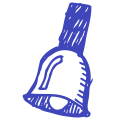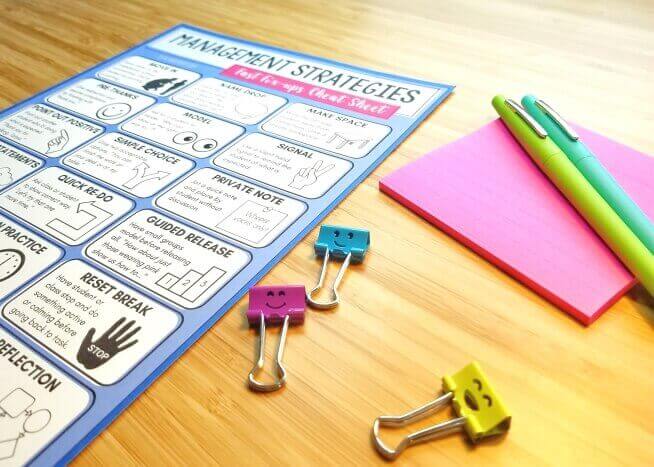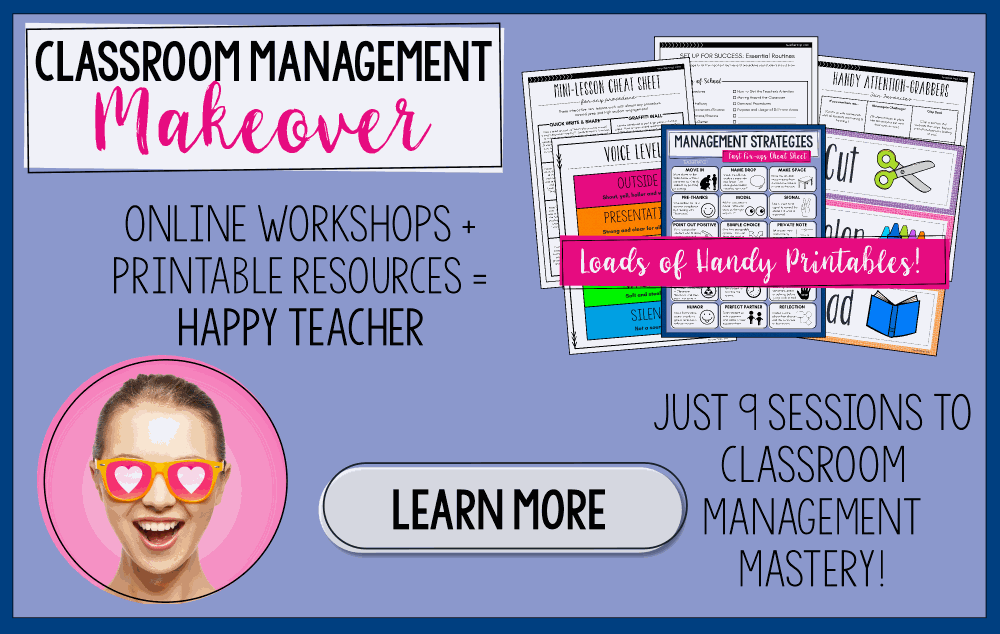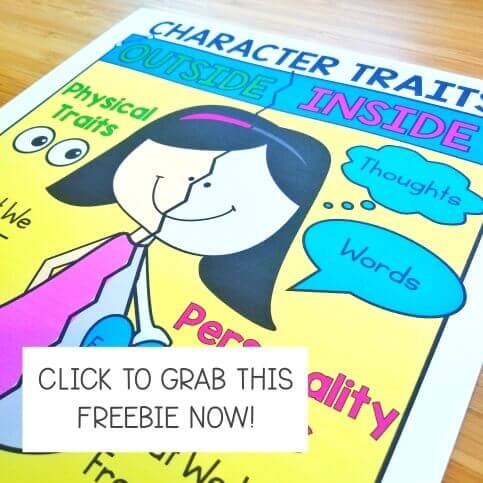
Every teacher has heard the inevitable chorus of I’m Done’s! that follows an assignment or activity in an elementary classroom. We all have those so called “fast-finishers.” There are tons of ideas for filling that gap of time between the “I’m Done!” and the class transitioning to the next lesson or activity, but what if there was no gap? What if there was no “I’m Done”? Learn why you should ban those 2 little words forever and don’t miss the handy (FREE) tool I’m sharing to help you do just that!
The Problem with “I’m Done.”
My biggest issue with kids saying “I’m done!” is that it implies “getting done” was the goal in the first place. It’s not just the words, but what the words reveal about student thinking. It means that the kids believe their goal was simply to finish the task. This leads to rushing through work, racing to be the first one finished, and looking forward to the next activity rather than focusing on the task at hand. Plus, as soon as one student calls out “I’m done,” many students feel pressure to catch up or end up distracted from their work.
I outlawed the words “I’m Done!” in my first grade class many years ago and the practice works just as well with my third graders. It was easy! I simply told the kids that we were no longer using that phrase and then we listed some other examples that had the same meaning, just to safe. I explained that work time was exactly that: work time.
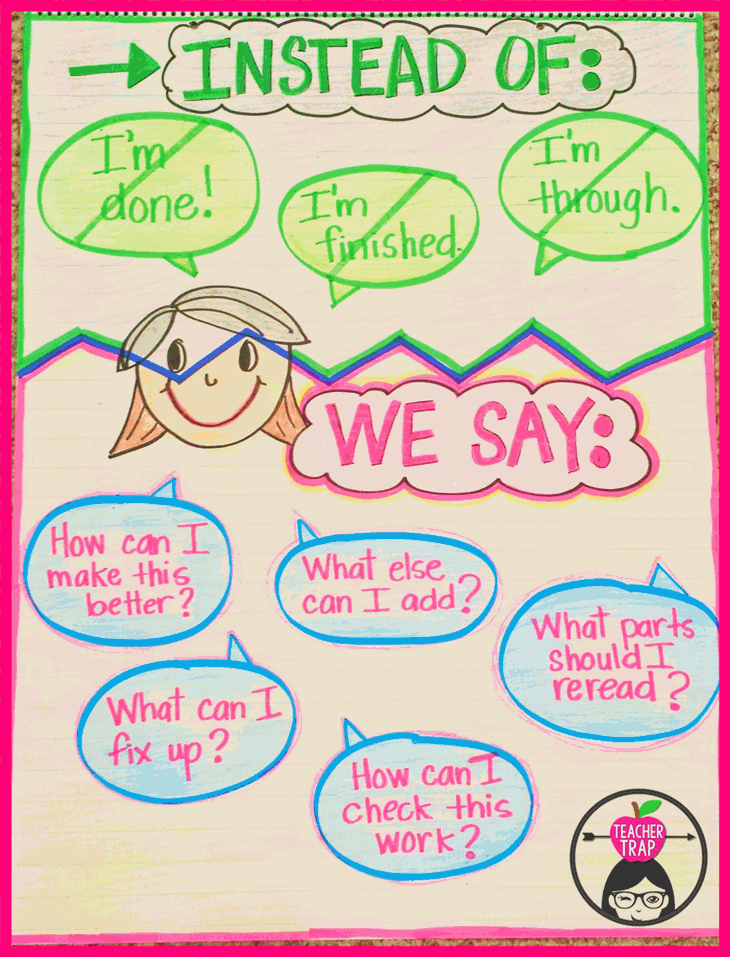
Once the kids realized that there wasn’t another activity waiting for them after they completed their task, I saw a huge change in how kids approached their work. There was no more race to finish. There was no stress to keep up with the “fast finishers.” My students began to think about the time available and set their pace more accordingly and the quality of their work improved!
How to Outlaw “I’m Done.”
1. Give Clear Expectations
Have a class meeting to discuss the problem with those words. Create a chart listing similar phrases and proclaim these phrases OUTLAWED! In the beginning, you’ll want to remind students of this new class rule before any independent work time.
2. Refocus on the Purpose of the Work
Help your students uncover the purpose of their work time. As a class, have students help brainstorm the purpose of different independent work times and all of things they can be doing during that time. I only did this once for a few different parts of the day, and we never had to do it again!
For example, the REAL GOALS of math work times might be to try out new strategies, grow problem-solving skills, and build math fluency. The REAL GOALS of independent reading time might be to apply reading strategies, make sense of the text, learn while reading, build fluency, and get lost in a great book!
Help your students refocus on the real goals, and then give clear examples of things they could be doing during these different work times.

Want help? I’ve got ready-to-go posters for Math, Reading, and Writing, plus blank versions, in my TPT Store. Click to grab your FREE posters!
3: Help Kids Develop Time Management Strategies
Many kids are so used to the “rush through so that I can be finished” mindset, that they have very poor time management. Help your students learn to use their time wisely! Before an independent work time, explain how much time students will have and how you expect them to use that time.
For example:
“Before we begin our independent writing time, let’s remember that our goal for today is to revise our writing and begin a final draft of our work. You’ll have 30 minutes to work. You might want to spend the first 15 minutes rereading and revising your writing and the last 15 minutes beginning work on your final draft.”
Then after about 15 minutes, give students an update on their time:
“Just a reminder that we are about halfway through our work time. You have about 15 more minutes. If you’re still revising, you might try to finish up and move on to your final draft.”
By removing “I’m Done!” you can refocus on the real learning goals and end the race to finish first. Kids learn to put their best effort into their work and develop time management strategies that can carry over into other areas of their lives.
I use this strategy during ALL independent work times including those during reading or writing workshop, tests, independent projects, or even crafts. And I use it during most partner work and group work!
Troubleshooting
But won’t some kids still finish early? Yes! You’ll still have some students who will “finish” early. Remember, these habits are often ingrained from years of being encouraged to “finish your work.” With these students, I first respond by pointing to the poster we created as a class that lists what they should be doing. I then quietly remind that student of the time left and encourage them to find a useful way to use that time. On occasion, I’ve had to pull certain kiddos into a little mini-conference where we talk through the work and I guide them in next steps of how to use the time wisely. In my experience, kids learn quickly that you’re not just going to give in and will adjust their behavior accordingly. Many of my “fast-finishers” were simply rushing and turning in messy work or work filled with silly mistakes. By holding them accountable for using this time, I could then suggest rewriting the work more neatly, checking for silly mistakes, adding more detail, etc.
But aren’t some kids just faster workers than others? Yes! We all have bright students that really are faster workers and can produce high quality work in a shorter amount of time. BUT, I find that when I hold those same students accountable for using their time wisely, I get HIGHER quality work! It’s about pushing every student to do their absolute best, not just trying to reach a minimum standard and be done.
But when will I fit in enrichment games? Not during independent work times. 🙂 If you have a fun activity waiting for students when they finish their “real work,” you’re encouraging them to rush. Don’t do it! Fast-finisher task cards, classroom Boggle boards, and enrichment games are great, but not when used as the final outcome of independent work. Essentially, you’re telling kids: “The goal is to finish this work so you can play this game.” This also goes for having fast-finishers do classroom jobs or walk around as peer helpers. Anything that takes the focus off the work at hand is harmful in the long run. Move those games to the 5 minutes before lunch or the ten minutes at the end of the day if the class has worked hard all day. Move them to the morning before the instructional day begins. Or if they aren’t really serving a purpose, get rid of them!
Do I have to stick to this on all activities? I do this for almost all independent work and much of the partner and group work, as well. I find that students get used to this expectation quickly and there is no need to turn it on and off all the time. On some activities, such as tests, I know that I’ll have some students who can do an awesome job but will be done way earlier than others. My solution for this is to provide a minimum work time. For example, if the kids are taking a big math test, I might say that I expect everyone to work for at least 40 minutes and will not accept work before then. And I also explain beforehand what students will be allowed to do after finishing their test (usually reading quietly at their seat). I don’t want finishing fast to be a reward!
Build a Community of Hard Workers
I think it’s important to teach kids about the value of hard work and the importance of doing your very best. I guess the outlawing of “I’m Done” is one way I try to help students grow perseverance!
Thanks for reading! I’d love to hear how you handle this classroom dilemma in your own room! 🙂


